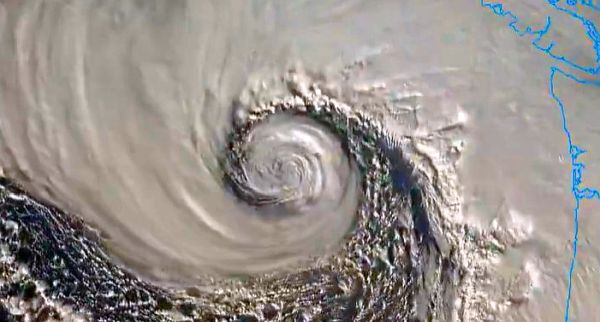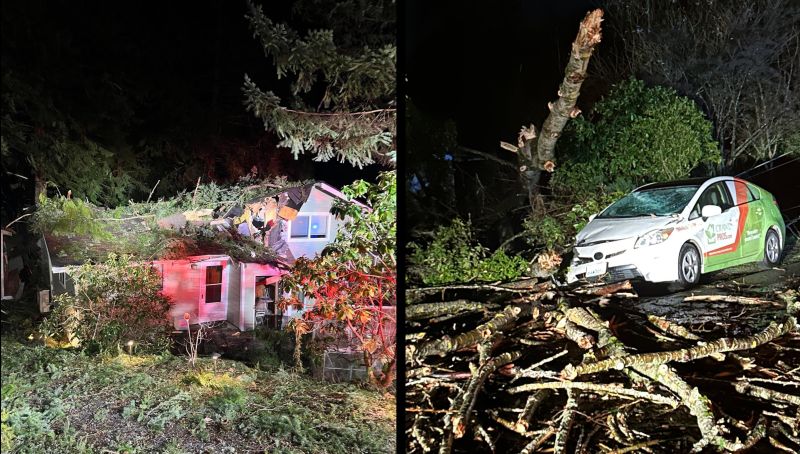
Deadly ‘bomb cyclone’ slams into west coast, one dead, hundreds of thousands with no power

Have you heard about the deadly bomb cyclone that just struck the Pacific Northwest and northern California, causing widespread destruction and chaos in its path? If “bomb cyclones” sound like bad things – that’s because they are.
Bomb cyclones are classified as extreme weather events where low-pressure systems undergo what meteorologists call “bombogenesis.” Bombogenesis occurs when a midlatitude cyclone (“midlatitude” meaning the area between the tropics and the polar regions) rapidly intensifies over a 24-hour period. This extreme weather event, which rapidly intensified due to the bombogenesis phenomenon, brought hurricane-force winds, heavy rainfall, and significant snowfall to the region, according to The Independent.
This bomb cyclone first hit Seattle, Washington, on Tuesday evening, resulting in at least one fatality and leaving hundreds of thousands without electricity. In Lynnwood, a woman was killed when a large tree fell on a homeless encampment, according to USA Today. The storm continued along a destructive path towards California and Oregon, causing extensive damage to trees and power lines.
As of this morning (Wednesday), almost 600,000 homes and businesses in Washington were without power, with King, Snohomish, and Kitsap counties being the worst affected areas. The Weather Prediction Center reported that the storm was expected to reach maximum intensity on Wednesday, with heavy rains and strengthening winds battering the Bay Area.
The bomb cyclone also brought an atmospheric river, a narrow band of moisture, which dumped up to 16 inches of rain on northern California and southwest Oregon. The National Weather Service warned of life-threatening flash flooding, rockslides, and blizzard conditions in the Cascades and northern parts of California. Reportedly, the storm is expected to peak tomorrow (Thursday,) with more than one month’s worth of rainfall forecasted for the coming weekend.
The powerful cyclone caused widespread wind gusts of up to 101 mph off the coast of Washington and hurricane-force winds up to 77 mph in the western part of the state. The storm’s impact was so severe that it was considered one of the most intense bomb cyclones on record for the region.
Affected communities are struggling to recover from its vicious onslaught. Schools across western Washington are closed; area residents were advised to avoid roads and stay away from downed power lines. The storm’s impact on the region’s infrastructure and daily life was significant, with prolonged power outages and treacherous travel conditions expected to last for several days, according to MSN.
The National Weather Service has called the bomb cyclone a “once-in-a-decade” event.
–
Posted by Richard Webster, Ace News Today
Follow Richard on Facebook, Twitter & Instagram






